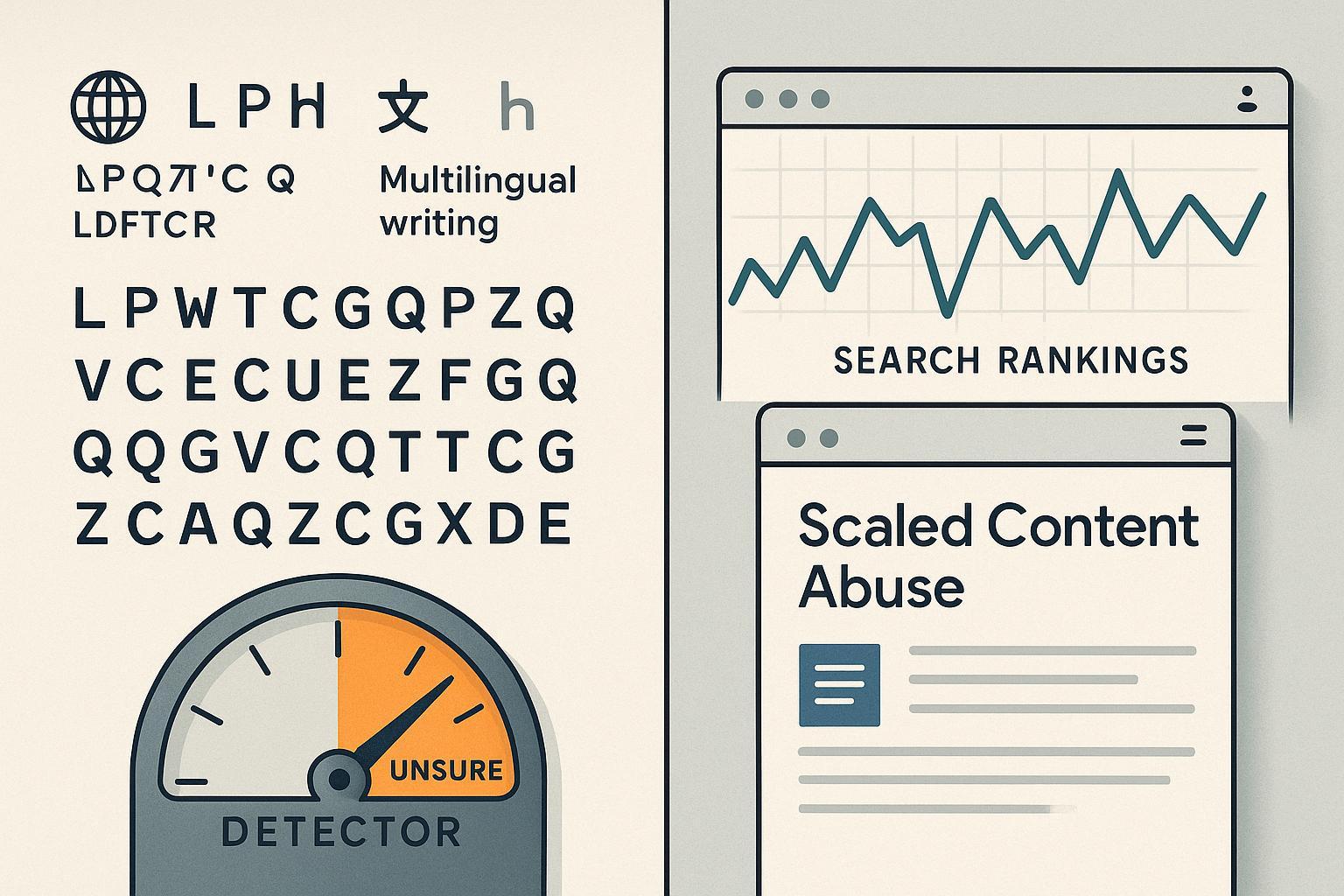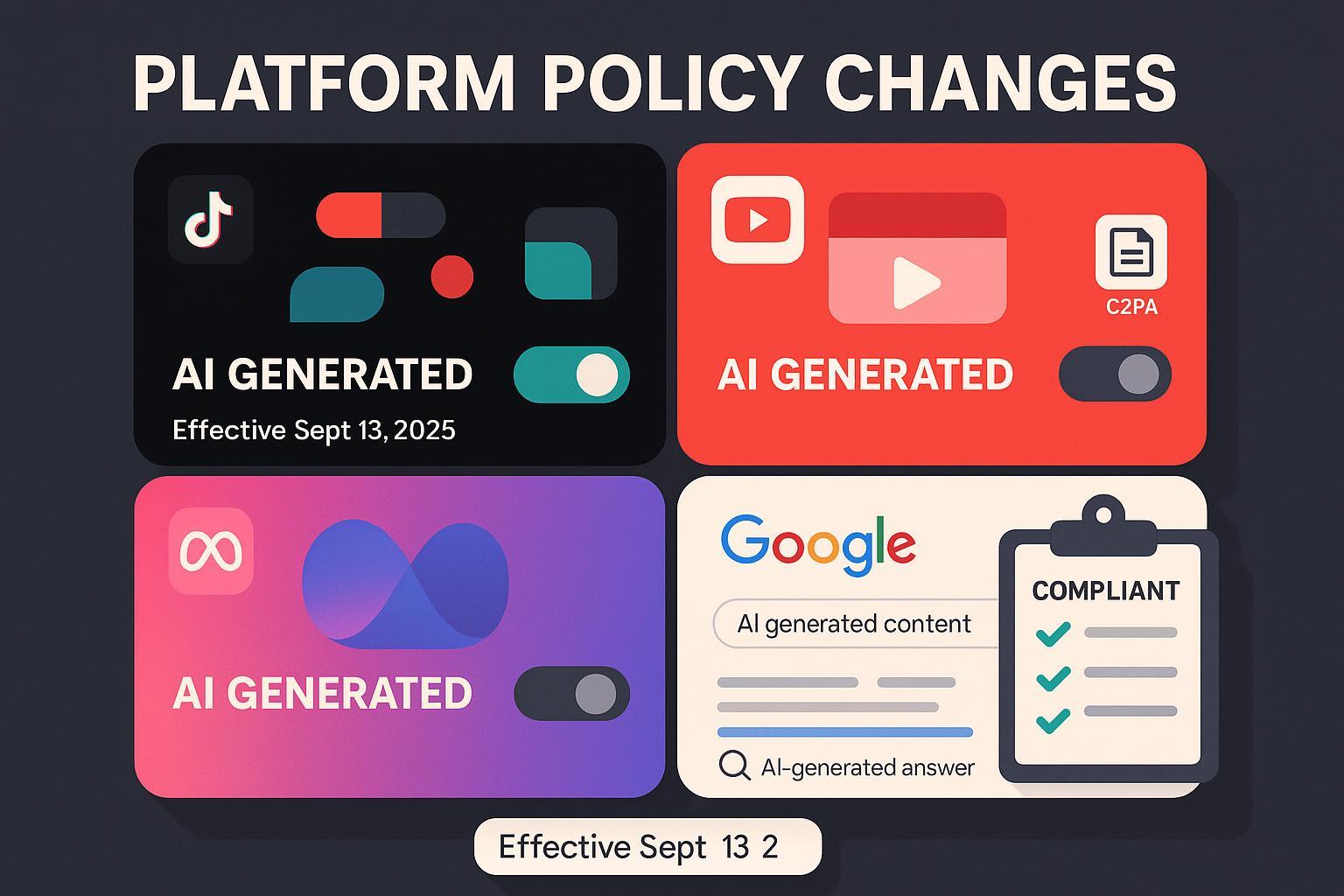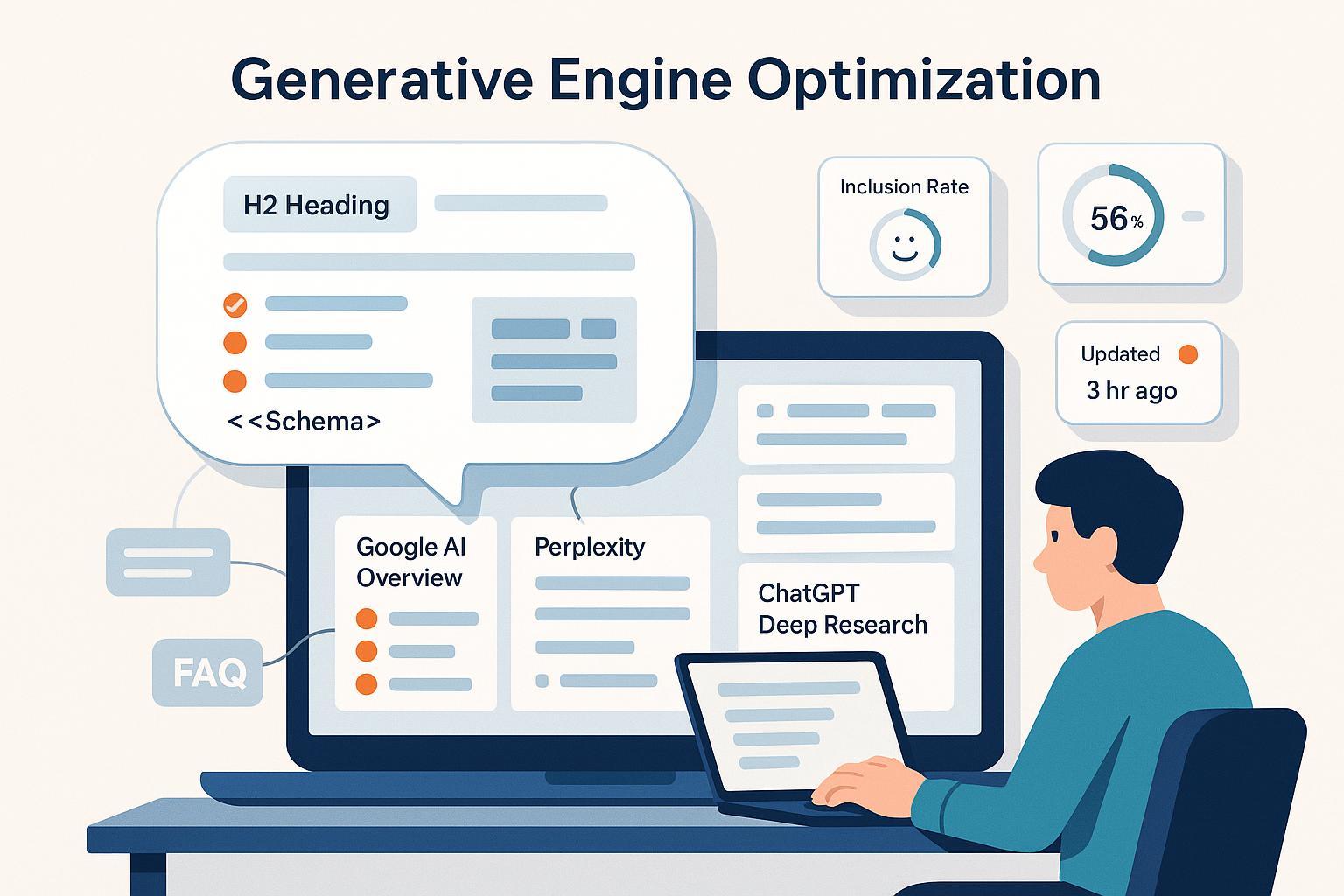Generative Search Visibility: The New Metric for AI Search
Discover Generative Search Visibility (GSV)—a new metric for assessing brand presence, citations, and impact in AI-generated search results. Learn measurement methods.


A plain-language definition
Generative Search Visibility (GSV) is the degree to which your brand or domain is present, credited (through links/citations), and contextually represented inside AI-generated search answers across engines like Google’s AI Overviews/AI Mode, Bing Copilot, Perplexity, and ChatGPT with browsing.
If classic SEO is winning shelf space in a store, GSV is being quoted by the shop assistant who answers the shopper directly. You’re not only trying to “rank”; you’re trying to be cited, linked, and framed correctly in the answer that many users read without clicking.
What GSV is not
- Not a traditional rank, impressions, or CTR metric
- Not general brand awareness or social listening
- Not a single standardized KPI (yet)—it’s a composite view of presence, attribution, and context within AI answers
For a broader visibility vocabulary and how it differs from SEO-centric scores, see this primer on the AI Search Visibility Score definition.
Why GSV matters right now
AI answers increasingly appear at the top of results, often summarizing the web and reducing clicks to individual sites. In April 2025, Ahrefs reported that position‑1 CTR can drop by roughly a third when an AI Overview is present, based on a 300k‑keyword analysis—see the methodology in the Ahrefs 2025 CTR impact study on AI Overviews. Google itself describes AI answers with “helpful web links” but, as of mid–late 2025, does not provide a dedicated AI Overview exposure report in Search Console; AI features are counted under Web search type, per the Google Search Central guidance on AI features (2025). Google’s own announcements also underscore that AI Mode/Overviews synthesize results and include links/citations—see the Google Blog AI in Search update (May 20, 2025).
The implication for marketers: even when clicks are down, brand influence can be up inside the AI answer. GSV captures that influence.
The starter GSV measurement model
Think of GSV as a simple, reproducible set of metrics you can trend over time:
- Presence rate
- Definition: The percentage of tested prompts where your brand/domain appears in the AI answer (mentioned or linked).
- Why it matters: Indicates whether you show up at all when the engine summarizes a topic.
- Citation rate
- Definition: The percentage of your appearances that include a link/explicit attribution to your domain.
- Why it matters: Mentions without links provide lower attribution and weaker downstream traffic potential.
- Sentiment balance
- Definition: The distribution of positive, neutral, and negative statements about your brand within the generated answer.
- Why it matters: Visibility without favorable or accurate context can harm outcomes.
- Coverage breadth
- Definition: The number of query clusters/topics (and engines) where you appear at least once.
- Why it matters: Shows whether visibility is concentrated in a few niches or spread across your topical map.
- Share of voice (SOV) in AI answers
- Definition: Your appearances vs. named competitors across the same prompt set and engines.
- Why it matters: Benchmarks your relative position in the summarized answer space.
Platform behaviors and data collection realities (2025)
Different engines expose citations and logs differently, which impacts how you collect GSV data.
-
Google AI Overviews / AI Mode
- Answers synthesize multiple sources and display links. Google has publicly described this behavior, but there’s no dedicated AI Overview exposure/citation report; AI features roll up under Web search type in Search Console. See Google Search Central’s AI features page (2025) and the Google Blog AI Mode update (May 20, 2025).
- Practical takeaway: rely on screenshots/logs and repeated sampling to track appearances and citations.
-
Perplexity
- By default, it surfaces inline citations and often a “Steps” view of sources and the retrieval process. For a practical overview of how this differs from ChatGPT, see Zapier’s 2025 comparison of Perplexity vs. ChatGPT.
- Practical takeaway: collecting cited URLs and their order is relatively straightforward.
-
ChatGPT with browsing / Deep Research
- When browsing or Deep Research is enabled (availability depends on tier), it can output cited sources. Linking practices vary by mode and prompt.
- Practical takeaway: log answers and capture any cited sources; note that not all assertions are linked.
For a hands-on review of engine behaviors and monitoring trade‑offs, see this cross‑engine guide: ChatGPT vs. Perplexity vs. Gemini vs. Bing—AI search monitoring comparison.
A practical sampling methodology you can run this week
Rigorous measurement depends more on your sampling process than on any single tool. Here’s a lightweight but defensible approach:
-
Build your prompt set
- Include 50–200 prompts across funnel stages: branded (e.g., “[Brand] pricing”), category (“best endpoint protection for SMBs”), problems (“how to secure remote laptops”), and comparisons (“[Brand] vs [Competitor]”).
- Group prompts into clusters that map to your content and product taxonomy.
-
Control your runs
- Run each prompt 3–5 times per engine to account for generation variability. Fix geography/language per test, and rotate times of day.
- Record engine/mode (e.g., AI Mode on Google, Perplexity with Deep Research on/off) for each run.
-
Log everything
- Store raw answers, screenshots, cited URLs, timestamps, and any visible positions/order of citations.
- Tag mentions with sentiment (positive/neutral/negative) using a consistent rubric.
-
Calculate the metrics
- Presence rate = appearances / total prompts (per engine and overall)
- Citation rate = linked appearances / appearances
- Sentiment balance = share of positive/neutral/negative among your appearances
- Coverage breadth = number of clusters with ≥1 appearance
- SOV = your appearances vs. competitor appearances within the same prompt set
-
Repeat on a cadence (e.g., monthly) and compare by engine, cluster, and market.
If you want to operationalize tracking and dashboards, this explainer walks through practical set‑ups: track brand visibility in AI search results.
Mini example (hypothetical numbers)
- Prompt set: 100 prompts across 12 clusters and 4 engines
- Results over one week:
Interpretation: Visibility exists but is concentrated; citations are decent, sentiment is mostly neutral, and cluster coverage could be expanded. Next iterations might target weak clusters with authoritative content and entity signals.
Governance: evidence, recency, and risk controls
AI answers vary by query, time, and mode. Keep your data trustworthy by:
-
Verifying evidence
- Prioritize primary sources in your content. Avoid being cited for outdated or tangential claims.
- Cross‑check any surprising or negative mentions; validate citations by opening linked sources.
-
- Use repeated sampling and date‑stamped logs. Note that Google and Bing don’t expose per‑feature reporting; rely on your own observations as per the Google Search Central AI features guidance (2025).
-
Avoiding conflation and over‑claims
- Studies differ in methodology. For example, overlap and ranking correlation between AI citations and organic results are not the same metric—see the Originality.ai 2025 study on AI citations vs. rankings. Treat such figures as directional.
-
- Follow platform Terms of Service. Prefer manual monitoring, official APIs, or approved tooling.
How GSV complements (not replaces) classic SEO
- Classic SEO tells you how pages rank and how often they get impressions/clicks.
- GSV tells you whether the AI answer quotes you, links to you, and frames you correctly.
- Together, they map both the “shelf space” and the “shop assistant’s recommendation.” When AI answers suppress clicks, a strong GSV can still shape consideration and downstream demand.
To go deeper on the optimization side—entity clarity, citations, and content patterns tuned for answer engines—see this field guide to Generative Engine Optimization (GEO) for AI search.
Next steps
- Define your prompt clusters and build a 50–200 prompt set per market.
- Run cross‑engine tests, 3–5 times each, and log answers, citations, and sentiment.
- Calculate presence, citation rate, sentiment, coverage, and SOV each month.
- Prioritize clusters with low presence or weak sentiment for content and entity improvements.
You can operationalize GSV tracking with a single workspace. Geneo supports multi‑engine brand monitoring, citation capture, sentiment logging, and historical comparisons so teams can trend these metrics over time. Disclosure: Geneo is our product.
Sources and notes
- As of 2025, Google confirms AI answers include links/citations but are not broken out in Search Console reporting; see Google Search Central: AI features and your website (2025) and the Google Blog AI in Search update (May 20, 2025).
- CTR impact example from the Ahrefs 2025 analysis of AI Overviews and clicks; impacts vary by query intent.
- Methodological distinction between overlap and rank correlation discussed in the Originality.ai 2025 study on Google rankings vs. AI citations.
- Platform UI differences for citations are illustrated in Zapier’s 2025 Perplexity vs. ChatGPT comparison.





